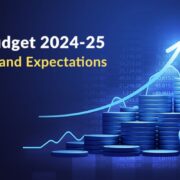Being self-employed has many rewards, but it also comes with additional tax obligations. One significant tax break that self-employed individuals should take advantage of is the self-employed tax credit. This credit can provide substantial savings on your federal income tax bill. However, understanding the nuances of this credit and optimizing your approach is crucial for maximizing its benefits. In this article, we’ll guide you through the steps to make the most of the self-employed tax credit.
- Understand the Eligibility Criteria The self-employed tax credit, also known as the deduction for self-employment tax, is available to individuals who have net earnings from self-employment. This includes sole proprietors, partners in a partnership, and members of a limited liability company (LLC) treated as a sole proprietorship or partnership for tax purposes. To qualify, your net self-employment earnings must be at least $400.
- Calculate Your Self-Employment Tax Before you can claim the self-employed tax credit, you need to calculate your self-employment tax liability. Self-employment tax is a combination of Social Security and Medicare taxes, similar to the payroll taxes withheld from employees’ paychecks. For the 2023 tax year, the self-employment tax rate is 15.3% on the first $142,800 of net self-employment income, plus 2.9% on any amount over $142,800.
- Determine Your Self-Employed Tax Credit Amount The self-employed tax credit is designed to help offset the cost of self-employment tax. It allows you to deduct half of your self-employment tax from your income tax liability. For example, if your self-employment tax for the year is $10,000, you can claim a $5,000 self-employed tax credit on your federal income tax return.
- Maximize Your Deductions One way to increase the value of the self-employed tax credit is to maximize your deductible business expenses. By reducing your net self-employment income, you’ll also reduce your self-employment tax liability, which in turn increases the value of the credit. Ensure you keep meticulous records and documentation for all eligible business expenses, such as home office expenses, advertising costs, vehicle expenses, and other operational costs.
- Consider Retirement Plan Contributions Contributing to a retirement plan, such as a solo 401(k) or a Simplified Employee Pension (SEP) IRA, can also help maximize your self-employed tax credit. These contributions reduce your net self-employment income, effectively lowering your self-employment tax and increasing the credit amount.
- Understand the Phase-Out Limits The self-employed tax credit is subject to phase-out limits based on your adjusted gross income (AGI). For the 2023 tax year, the credit begins to phase out when your AGI exceeds $182,000 for single filers or $364,000 for married couples filing jointly. It phases out completely at $202,000 for single filers and $404,000 for married couples filing jointly. If your AGI falls within these ranges, your credit may be reduced or eliminated.
- Plan for Estimated Tax Payments As a self-employed individual, you are typically required to make estimated tax payments throughout the year to cover your income tax and self-employment tax liabilities. Failing to make these payments on time can result in penalties and interest charges, reducing the overall benefit of the self-employed tax credit. Consult with a tax professional to ensure you’re making accurate estimated tax payments and avoiding unnecessary penalties.
- Consider Hiring a Tax Professional While understanding and maximizing the self-employed tax credit is possible on your own, it can be complex and time-consuming, especially if you have multiple income sources or a more complicated tax situation. Hiring a qualified tax professional can provide valuable guidance, ensure you’re taking advantage of all eligible deductions and credits, and help you stay compliant with tax laws and regulations.
By following these steps and taking a proactive approach to your tax planning, you can maximize the benefits of the self-employed tax credit and potentially save thousands of dollars on your annual tax bill. Remember, staying organized, maintaining accurate records, and seeking professional advice when necessary can go a long way in optimizing your tax situation as a self-employed individual.






